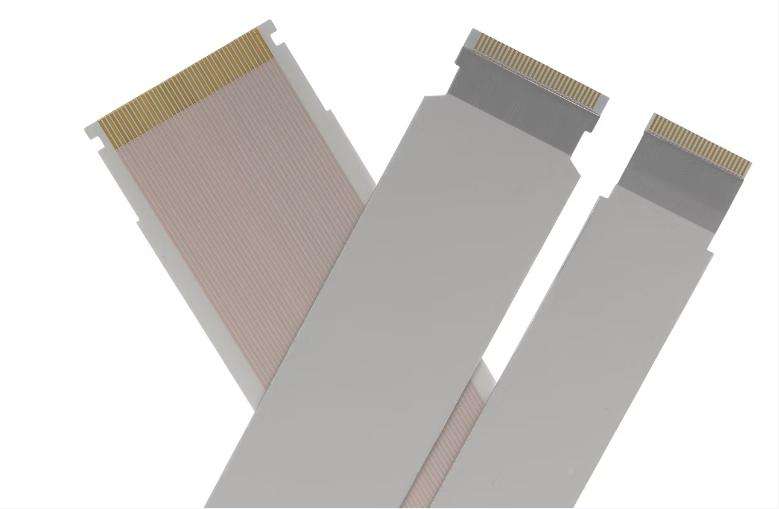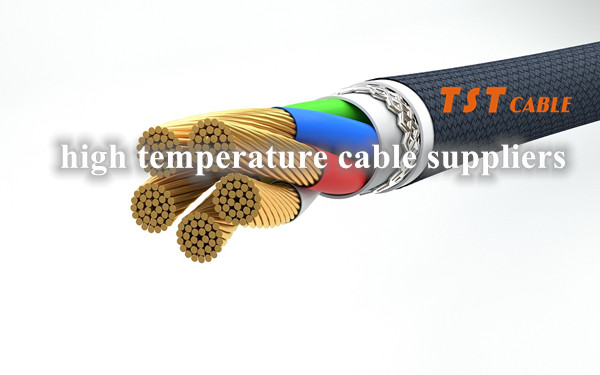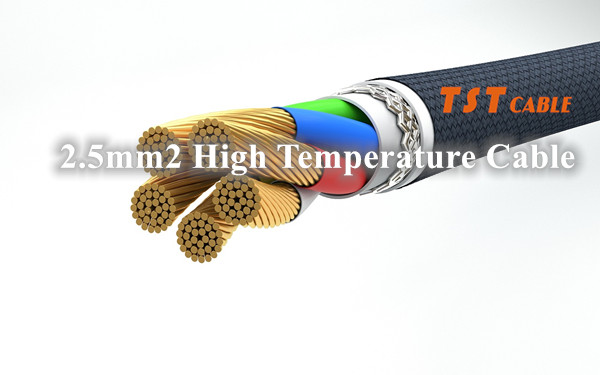In order to help users better understand and use high temperature cable silicone cable wires, TST CABLES has summarized 50 common questions about high temperature cable silicone cable wires, covering the basic knowledge of high temperature cable silicone cable, purchase guide, installation and use, maintenance and other aspects. Interested friends can follow TST CABLES official website to get the latest high temperature cable silicone cable technology trends and information.

High temperature cable silicone cable is a cable that uses silicone rubber as insulation material and/or sheath material. Silicone rubber is widely used in fields requiring high performance cables due to its unique properties. The following is a detailed introduction to high temperature cable silicone cable:
1. High temperature cable silicone cable material characteristics
Silicone rubber: Silicone rubber is a synthetic rubber with excellent temperature resistance, chemical resistance, biocompatibility and aging resistance. It is usually composed of siloxane chain segments and has good flexibility and elasticity.
2. Main advantages of high temperature cable silicone cable
Wide temperature resistance range:
Low temperature performance: High temperature cable silicone cable can remain soft at extremely low temperatures (-260°C) and is suitable for low temperature environments.
High temperature performance: The maximum operating temperature of high temperature cable silicone cable can reach more than 260°C, which is suitable for high temperature environment.
Good flexibility:
The high temperature cable silicone cable material gives the cable extremely high softness, which is easy to bend and wind, and reduces the damage caused by repeated bending.
Even after multiple bending, the cable can still maintain its original shape and performance.
Biocompatibility:
Silicone material is non-toxic and odorless, suitable for parts of medical equipment that need to contact the human body.
The surface is smooth and not easy to breed bacteria, suitable for use in sterile environments.
Chemical resistance:
It can resist the erosion of a variety of chemical reagents and is suitable for medical equipment that needs frequent cleaning and disinfection.
Good anti-aging performance, and can still maintain good performance after long-term use.
Wear resistance:
The surface is smooth and wear-resistant, suitable for use in equipment that needs frequent movement.
Environmental protection:
Silicone material can be recycled and meets environmental protection requirements.
3. High temperature cable silicone cable structure composition
Conductor: Copper conductor is usually used, which can be single-strand or multi-strand twisted.
Insulation layer: Silicone rubber material is used to provide good electrical insulation performance.
Sheath layer (optional): usually also made of silicone rubber material, providing additional protection.
Shielding layer (optional): Some models of high-temperature cable silicone cables are equipped with a shielding layer to reduce electromagnetic interference (EMI) and ensure the stability and accuracy of signal transmission.
4. Application fields of high-temperature cable silicone cables
Medical equipment:
Connection wires for electrocardiographs (ECG), monitors, ultrasound probes, endoscopes and other equipment.
Food processing:
Power lines, signal lines, etc. in food processing equipment.
Aerospace:
Wiring inside aircraft, sensor connection lines, etc.
Industrial automation:
Connection wires in robot arms and automated production lines.
Laboratory equipment:
Hematology analyzers, biochemical analyzers, etc. require the connection of multiple signal lines and power lines.
5. High-temperature cable silicone cable selection guide
Determine application requirements:
Choose the appropriate temperature resistance range, flexibility, shielding performance, etc. according to the specific application environment.
Choose the appropriate specifications:
Determine the required number of cores (2 cores, 3 cores, 4 cores, etc.) and the cross-sectional area of the wire.
Consider special needs:
Whether a shielding layer, specific color identification, special length, etc. are required.
6. Installation and use of high-temperature cable silicone cable
Precautions for installing high-temperature cable silicone cable:
Ensure that the bending radius during installation is not less than 5 times the outer diameter of the cable.
Avoid forcibly bending the cable at sharp angles.
Precautions for using high-temperature cable silicone cable:
Regularly check the cable for wear, cracks and other problems.
Avoid the cable from contacting sharp objects or being squeezed by heavy objects.
7. Maintenance of high-temperature cable silicone cable
Cleaning method of high-temperature cable silicone cable:
Wipe the surface with a clean soft cloth and avoid using corrosive detergents.
If you need to clean it with water, make sure the cable is completely dry before use.
Storage method of high-temperature cable silicone cable:
Store in a dry and ventilated place, avoid direct sunlight and heavy object squeezing.
Due to its excellent performance and wide applicability, high-temperature cable silicone cable is widely used in many fields such as medical, food processing, aerospace, and industrial automation. Choosing a suitable high-temperature cable silicone cable can ensure the stable operation and long-term reliability of the equipment.
Basic knowledge of high-temperature cable silicone cable
1. What is high-temperature cable silicone cable?
High-temperature cable silicone cable refers to a cable that uses silicone rubber as an insulation material and/or sheath material.
2. What are the advantages of high temperature cable silicone cable?
Temperature resistance: It can be used in a temperature range from extremely low (-260°C) to extremely high (200°C, some TST CABLES high temperature cable silicone cables can withstand high temperatures up to 260°C and above).
Flexibility: It has good softness and elasticity.
Biocompatibility: It is non-toxic and odorless, suitable for medical equipment and other occasions that need to come into contact with the human body.
Chemical resistance: It can resist the erosion of a variety of chemicals.
Aging resistance: It can still maintain good performance after long-term use.
3. What are the typical application areas of high temperature cable silicone cable?
Medical equipment, food processing, aerospace, industrial automation, etc.
4. What are the conductor materials of high temperature cable silicone cable?
Copper conductors are usually used, which can be single-strand or multi-strand twisted.
5. What is the operating temperature range of high temperature cable silicone cable?
Generally between -260°C and 260°C, special high temperature cable silicone cables can reach higher temperatures.
6. What is the insulation layer material of high temperature cable silicone cable?
Mainly silicone rubber.
7. What is the sheath material of high temperature cable silicone cable?
It is also silicone rubber.
8. Can high temperature cable silicone cable be customized in color?
Yes, high temperature cable silicone cable of different colors can be customized according to customer needs.
High temperature cable silicone cable purchase guide
9. How to choose the right high temperature cable silicone cable?
Choose the right specifications according to the application environment, working temperature, conductivity requirements and other factors.
10. What are the specifications of high temperature cable silicone cable?
Usually including 2 cores, 3 cores, 4 cores and other specifications, as well as different cross-sectional areas.
11. What are the cross-sectional areas of high temperature cable silicone cable?
Common cross-sectional areas are 0.5mm², 1.0mm², 1.5mm², 2.5mm², etc.
12. Does high temperature cable silicone cable need a shielding layer?
If the application needs to reduce electromagnetic interference (EMI), you can choose a high temperature cable silicone cable with a shielding layer.
13. What is the shielding material of high temperature cable silicone cable?
Generally a metal braided layer or an aluminum foil shielding layer.
14. What is the bending radius of high temperature cable silicone cable?
Generally 5-10 times the outer diameter of the cable.
15. Is high temperature cable silicone cable suitable for outdoor use?
Yes, high temperature cable silicone cable has good weather resistance and is suitable for outdoor use.
Installation and use of high temperature cable silicone cable
16. How to install high temperature cable silicone cable?
Before installation, confirm whether the cable specifications are correct and lay the cable according to the minimum bending radius.
17. Can high temperature cable silicone cable be mixed with other types of cables?
Yes, but you need to pay attention to compatibility issues such as voltage level and conductivity.
18. Does high temperature cable silicone cable need to be grounded?
If the cable has a shielding layer, it needs to be grounded to reduce interference.
19. How to deal with the joints of high temperature cable silicone cable?
Use special joints or connectors and ensure that the connection is firm and reliable.
20. Can high temperature cable silicone cable be welded?
Yes, but you need to pay attention to the welding temperature and time to avoid overheating and damage to the insulation layer.
21. Can high temperature cable silicone cable be used in underwater environments?
Yes, but you need to choose a waterproof high-temperature cable silicone cable.
22. Can high-temperature cable silicone cables be used in high-temperature environments?
Yes, high-temperature cable silicone cables have good high-temperature resistance.
23. Can high-temperature cable silicone cables be used in low-temperature environments?
Yes, high-temperature cable silicone cables can still maintain good flexibility at low temperatures.
24. How long is the service life of high-temperature cable silicone cables?
Generally up to several decades, depending on the use environment and maintenance.
High-temperature cable silicone cable maintenance
25. How to clean high-temperature cable silicone cables?
Use a clean soft cloth to wipe the surface and avoid using corrosive detergents.
26. Does high-temperature cable silicone cable need to be checked regularly?
Yes, check the cable regularly for wear, cracks and other problems.
27. How to store high-temperature cable silicone cables?
Store in a dry, ventilated place, avoid direct sunlight and heavy objects.
28. How to deal with damage to high-temperature cable silicone cables?
If damage is found, it should be replaced or repaired in time to ensure safe use.
29. Can high temperature cable silicone cable be reused?
It depends on the specific situation. If the cable is intact and has not exceeded its service life, it can be reused.
30. How to recycle high temperature cable silicone cable?
Silicone materials can be recycled and reused, but they need to be handled by professional institutions.
High temperature cable silicone cable application examples
31. Application of high temperature cable silicone cable in medical equipment?
Such as the connecting wires of monitors, ultrasonic probes, endoscopes and other equipment.
32. Application of high temperature cable silicone cable in food processing?
Such as power lines and signal lines in food processing equipment.
33. Application of high temperature cable silicone cable in aerospace?
Such as wiring inside the aircraft, sensor connection lines, etc.
34. Application of high temperature cable silicone cable in industrial automation?
Such as connecting wires in robot arms and automated production lines.
Technical parameters of high temperature cable silicone cable
35. What is the maximum voltage of high temperature cable silicone cable?
Usually 300V or 600V, depending on the model.
36. What is the minimum bending radius of high temperature cable silicone cable?
Generally 5-10 times the outer diameter of the cable.
37. How is the oil resistance of high temperature cable silicone cable?
High temperature cable silicone cable has good oil resistance and is suitable for a variety of oil environments.
38. How is the chemical resistance of high temperature cable silicone cable?
It can resist the erosion of a variety of chemicals and is suitable for chemical industrial environments.
39. How is the flame retardant performance of high temperature cable silicone cable?
Generally has certain flame retardant properties, but it depends on the model.
High temperature cable silicone cable user feedback
40. How do users evaluate high temperature cable silicone cable?
Users generally believe that high temperature cable silicone cable has excellent performance and reliability.
41. What are the common problems of high temperature cable silicone cable?
Such as service life, installation method, maintenance, etc.
Future development trend of high temperature cable silicone cable
42. What is the future development trend of high temperature cable silicone cable?
With the advancement of technology, high temperature cable silicone cable will have more innovations and developments in performance and application areas. In the future, high-temperature cable silicone cables will pay more attention to environmental protection, high efficiency, multi-functional integration and other directions.
43. What are the production standards for high-temperature cable silicone cables?
International standards such as ISO, IEC, etc., as well as national standards of various countries.
44. What are the certifications for high-temperature cable silicone cables?
Such as UL, EN, CE, ROHS and other certifications.
Common misunderstandings about high-temperature cable silicone cables
45. Can high-temperature cable silicone cables only be used for medical equipment?
No, high-temperature cable silicone cables are widely used in a variety of occasions.
46. Are high-temperature cable silicone cables more expensive than cables made of other materials?
Generally speaking, the cost of high-temperature cable silicone cables is relatively high, but the cost performance is high.
47. What is the market prospect of high-temperature cable silicone cables?
With technological advancement and growing demand, the market prospect of high-temperature cable silicone cables is broad.
48. Can high-temperature cable silicone cables be welded?
Yes, but you need to pay attention to the welding temperature and time to avoid overheating and damage to the insulation layer.
Safety tips for high-temperature cable silicone cables
49. What safety precautions should be taken when using high-temperature cable silicone cables?
Ensure that the cable specifications are correct, the installation is reasonable, and the maintenance is regularly checked.
50. How to choose a suitable high-temperature cable silicone cable supplier?
Choose a source factory supplier like TST CABLES that has been established for more than 20 years, has qualifications, patented technology, and a good reputation, and check its product certifications and user reviews.
Through the above information on high-temperature cable silicone cables, I hope to help you fully understand the relevant knowledge of high-temperature cable silicone cables and wires, so that you can make the right choice and use in practical applications. If you have any specific application requirements or technical questions, please feel free to send an email to contact the technical engineer of TST CABLES, a professional high-temperature cable silicone cable manufacturer (Email: lixiangchao@testeck.com).
Also available in:
English





